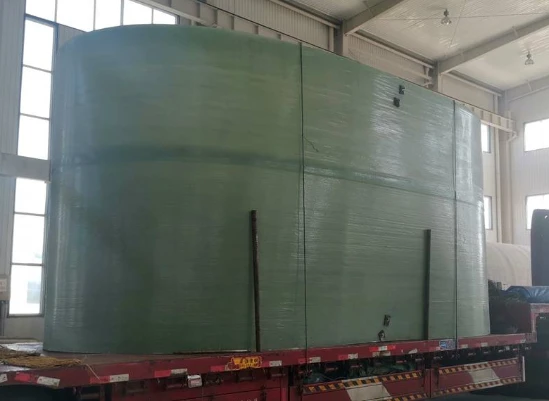
-
 Afrikaans
Afrikaans -
 Albanian
Albanian -
 Amharic
Amharic -
 Arabic
Arabic -
 Armenian
Armenian -
 Azerbaijani
Azerbaijani -
 Basque
Basque -
 Belarusian
Belarusian -
 Bengali
Bengali -
 Bosnian
Bosnian -
 Bulgarian
Bulgarian -
 Catalan
Catalan -
 Cebuano
Cebuano -
 China
China -
 China (Taiwan)
China (Taiwan) -
 Corsican
Corsican -
 Croatian
Croatian -
 Czech
Czech -
 Danish
Danish -
 Dutch
Dutch -
 English
English -
 Esperanto
Esperanto -
 Estonian
Estonian -
 Finnish
Finnish -
 French
French -
 Frisian
Frisian -
 Galician
Galician -
 Georgian
Georgian -
 German
German -
 Greek
Greek -
 Gujarati
Gujarati -
 Haitian Creole
Haitian Creole -
 hausa
hausa -
 hawaiian
hawaiian -
 Hebrew
Hebrew -
 Hindi
Hindi -
 Miao
Miao -
 Hungarian
Hungarian -
 Icelandic
Icelandic -
 igbo
igbo -
 Indonesian
Indonesian -
 irish
irish -
 Italian
Italian -
 Japanese
Japanese -
 Javanese
Javanese -
 Kannada
Kannada -
 kazakh
kazakh -
 Khmer
Khmer -
 Rwandese
Rwandese -
 Korean
Korean -
 Kurdish
Kurdish -
 Kyrgyz
Kyrgyz -
 Lao
Lao -
 Latin
Latin -
 Latvian
Latvian -
 Lithuanian
Lithuanian -
 Luxembourgish
Luxembourgish -
 Macedonian
Macedonian -
 Malgashi
Malgashi -
 Malay
Malay -
 Malayalam
Malayalam -
 Maltese
Maltese -
 Maori
Maori -
 Marathi
Marathi -
 Mongolian
Mongolian -
 Myanmar
Myanmar -
 Nepali
Nepali -
 Norwegian
Norwegian -
 Norwegian
Norwegian -
 Occitan
Occitan -
 Pashto
Pashto -
 Persian
Persian -
 Polish
Polish -
 Portuguese
Portuguese -
 Punjabi
Punjabi -
 Romanian
Romanian -
 Russian
Russian -
 Samoan
Samoan -
 Scottish Gaelic
Scottish Gaelic -
 Serbian
Serbian -
 Sesotho
Sesotho -
 Shona
Shona -
 Sindhi
Sindhi -
 Sinhala
Sinhala -
 Slovak
Slovak -
 Slovenian
Slovenian -
 Somali
Somali -
 Spanish
Spanish -
 Sundanese
Sundanese -
 Swahili
Swahili -
 Swedish
Swedish -
 Tagalog
Tagalog -
 Tajik
Tajik -
 Tamil
Tamil -
 Tatar
Tatar -
 Telugu
Telugu -
 Thai
Thai -
 Turkish
Turkish -
 Turkmen
Turkmen -
 Ukrainian
Ukrainian -
 Urdu
Urdu -
 Uighur
Uighur -
 Uzbek
Uzbek -
 Vietnamese
Vietnamese -
 Welsh
Welsh -
 Bantu
Bantu -
 Yiddish
Yiddish -
 Yoruba
Yoruba -
 Zulu
Zulu
Exploring the Benefits of FRP Drums in Industrial Applications
Exploring FRP Drums Revolutionizing Storage and Transportation
In the world of industrial storage solutions, FRP (Fiberglass Reinforced Plastic) drums have emerged as a revolutionary choice, providing unique advantages over traditional materials such as metal and plastic. These drums are renowned for their strength, durability, and versatility, making them suitable for a wide range of applications, including chemical storage, waste management, and even food processing. This article delves into the characteristics of FRP drums, their applications, benefits, and future prospects.
Characteristics of FRP Drums
FRP drums are composed of a composite material that combines fiberglass fibers with a polymer resin. This combination results in a lightweight yet incredibly strong structure, making FRP drums resistant to impacts and extreme environmental conditions. Moreover, they possess excellent resistance to corrosion, which is critical when storing corrosive chemicals or materials. The non-porous surface of FRP also prevents the absorption of contaminants, ensuring that the stored products remain uncontaminated.
One of the standout features of FRP drums is their ability to be customized. Manufacturers can design these drums in various sizes, shapes, and colors, allowing for tailored storage solutions that meet specific industry needs. Additionally, FRP drums can be manufactured with different wall thicknesses and reinforcements, providing flexibility in choosing the right drum for the application.
Applications of FRP Drums
The versatility of FRP drums makes them suitable for various industries. In the chemical sector, these drums are frequently used to store hazardous materials due to their corrosion-resistant properties. FRP drums can endure harsh chemicals, making them ideal for transporting acids, alkalis, and solvents safely. Moreover, their light weight contributes to reduced transportation costs, as more product can be shipped without exceeding weight limits.
frp drum

In the oil and gas industry, FRP drums are utilized for on-site storage of drilling fluids, lubricants, and other essential materials. Their robust design can withstand the rigors of rough handling and harsh environments, ensuring safety and reliability. Additionally, FRP drums are finding applications in the food industry for the safe storage of edible oils and other food products, thanks to their non-reactive surfaces.
Advantages of FRP Drums
The advantages of FRP drums over traditional storage solutions are substantial. First and foremost, their lightweight nature makes handling and transport significantly easier, reducing labor costs and the risk of accidents during loading and unloading. Furthermore, the longevity of FRP drums translates to lower replacement costs, as they can last longer than metal drums that succumb to rust and wear over time.
Environmental considerations also play a major role in the appeal of FRP drums. Many manufacturers now produce these drums with recycled materials, contributing to sustainability efforts while providing a viable storage solution. Additionally, the recyclability of FRP itself means that, at the end of their life cycle, these drums can be repurposed, reducing waste.
Future Prospects
As industries increasingly prioritize sustainability and efficiency, the demand for FRP drums is likely to grow. Innovations in composite materials and manufacturing techniques are expected to enhance the performance and reduce the costs of FRP drums further. Additionally, as regulations surrounding the storage and transportation of hazardous materials continue to tighten, the need for reliable, compliant storage solutions like FRP drums will remain paramount.
In conclusion, FRP drums represent a significant advancement in industrial storage technology. With their superior durability, corrosion resistance, and customization options, they provide an effective solution for a myriad of applications. As we move toward a more sustainable future, FRP drums are poised to play a crucial role in optimizing storage and transportation processes across various sectors.









